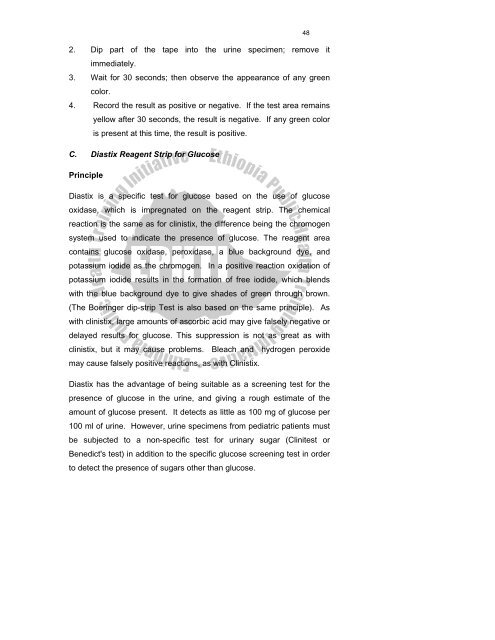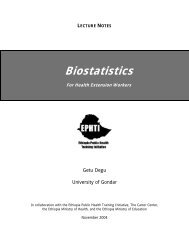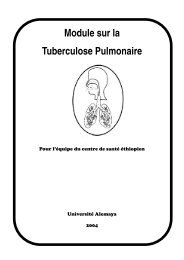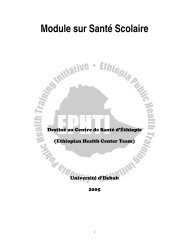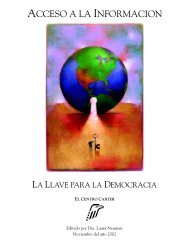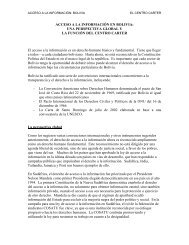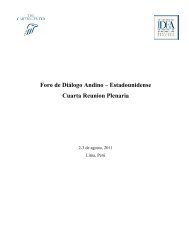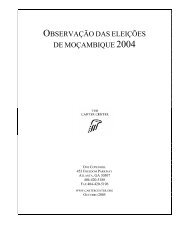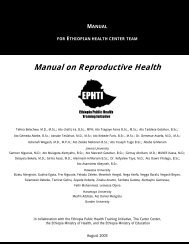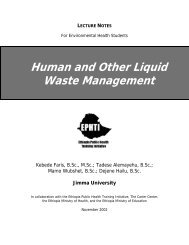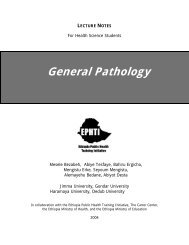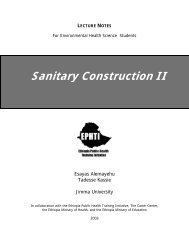Urinalysis - The Carter Center
Urinalysis - The Carter Center
Urinalysis - The Carter Center
You also want an ePaper? Increase the reach of your titles
YUMPU automatically turns print PDFs into web optimized ePapers that Google loves.
2. Dip part of the tape into the urine specimen; remove it<br />
immediately.<br />
3. Wait for 30 seconds; then observe the appearance of any green<br />
color.<br />
4. Record the result as positive or negative. If the test area remains<br />
yellow after 30 seconds, the result is negative. If any green color<br />
is present at this time, the result is positive.<br />
C. Diastix Reagent Strip for Glucose<br />
Principle<br />
Diastix is a specific test for glucose based on the use of glucose<br />
oxidase, which is impregnated on the reagent strip. <strong>The</strong> chemical<br />
reaction is the same as for clinistix, the difference being the chromogen<br />
system used to indicate the presence of glucose. <strong>The</strong> reagent area<br />
contains glucose oxidase, peroxidase, a blue background dye, and<br />
potassium iodide as the chromogen. In a positive reaction oxidation of<br />
potassium iodide results in the formation of free iodide, which blends<br />
with the blue background dye to give shades of green through brown.<br />
(<strong>The</strong> Boeringer dip-strip Test is also based on the same principle). As<br />
with clinistix, large amounts of ascorbic acid may give falsely negative or<br />
delayed results for glucose. This suppression is not as great as with<br />
clinistix, but it may cause problems. Bleach and hydrogen peroxide<br />
may cause falsely positive reactions, as with Clinistix.<br />
Diastix has the advantage of being suitable as a screening test for the<br />
presence of glucose in the urine, and giving a rough estimate of the<br />
amount of glucose present. It detects as little as 100 mg of glucose per<br />
100 ml of urine. However, urine specimens from pediatric patients must<br />
be subjected to a non-specific test for urinary sugar (Clinitest or<br />
Benedict's test) in addition to the specific glucose screening test in order<br />
to detect the presence of sugars other than glucose.<br />
48


